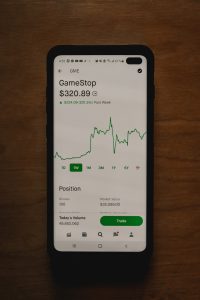Rollover Rates in Forex Trading: How They Affect Your Profits and Losses
When it comes to forex trading, there are many factors to consider that can impact your profits and losses. One such factor is the rollover rate. Rollover rates play a significant role in determining the cost of holding a position overnight, and understanding how they work is essential for every forex trader.
What are Rollover Rates?
In forex trading, rollover rates refer to the interest paid or earned for holding a currency pair position overnight. Since forex trading operates 24 hours a day, positions opened during the trading day are typically closed before the day ends. However, if a trader decides to keep a position open beyond the trading day, they will incur a rollover fee.
Rollover rates are calculated based on the interest rate differential between the two currencies in a currency pair. Each currency has an associated interest rate set by its central bank. When you hold a position overnight, you are essentially borrowing one currency to buy another, and the interest rate differential determines the cost or benefit of this borrowing.
For example, if you are trading the EUR/USD currency pair and the interest rate on the euro is higher than the interest rate on the US dollar, you would earn a positive rollover rate for holding a long position (buying euros) overnight. Conversely, if the interest rate on the US dollar is higher, you would incur a negative rollover rate.
How Rollover Rates Affect Profits and Losses
Rollover rates can significantly impact your profits and losses in forex trading. When you earn a positive rollover rate, it adds to your profits, and when you incur a negative rollover rate, it adds to your losses. However, it’s important to note that rollover rates are typically small, and their impact may not be immediately noticeable, especially for short-term traders.
To understand how rollover rates affect your profits and losses, let’s consider an example. Suppose you are trading the AUD/USD currency pair, and the interest rate on the Australian dollar is 2%, while the interest rate on the US dollar is 1%. If you hold a long position of 10,000 AUD overnight, you would earn a positive rollover rate of 0.5 AUD. This means that for every day you hold the position, you would earn an additional 0.5 AUD.
On the other hand, if you hold a short position of 10,000 AUD overnight, you would incur a negative rollover rate of 0.5 AUD. This means that for every day you hold the position, you would lose an additional 0.5 AUD.
It’s important to consider rollover rates when planning your trading strategy, especially if you are a swing trader or a position trader who holds positions for an extended period. If you anticipate holding positions for multiple days or weeks, the cumulative effect of rollover rates can significantly impact your overall profitability.
Factors Affecting Rollover Rates
Several factors influence rollover rates in forex trading. The most important factor is the interest rate differential between the two currencies in a currency pair. The larger the interest rate differential, the greater the impact on the rollover rate.
Other factors that can affect rollover rates include central bank policies, economic indicators, and geopolitical events. Changes in central bank policies, such as interest rate hikes or cuts, can lead to significant shifts in rollover rates. Economic indicators, such as inflation or GDP growth, can also impact interest rates and, consequently, rollover rates. Additionally, geopolitical events, such as elections or geopolitical tensions, can create volatility in the forex market and affect rollover rates.
Managing Rollover Rates
To manage the impact of rollover rates on your profits and losses, it’s essential to consider them when calculating your trading costs and potential returns. Most forex brokers provide information on rollover rates for different currency pairs, allowing you to make informed decisions. Additionally, you can use forex calculators or trading platforms that automatically calculate the rollover costs or benefits for your positions.
It’s also crucial to monitor economic events and central bank announcements that can impact interest rates and rollover rates. By staying informed, you can adjust your trading strategy accordingly and take advantage of potential opportunities.
Conclusion
Rollover rates play a significant role in forex trading, affecting the cost of holding positions overnight. Understanding how they work and their impact on your profits and losses is essential for every forex trader. By considering rollover rates when planning your trades and monitoring economic events, you can effectively manage this aspect of forex trading and enhance your overall profitability.






